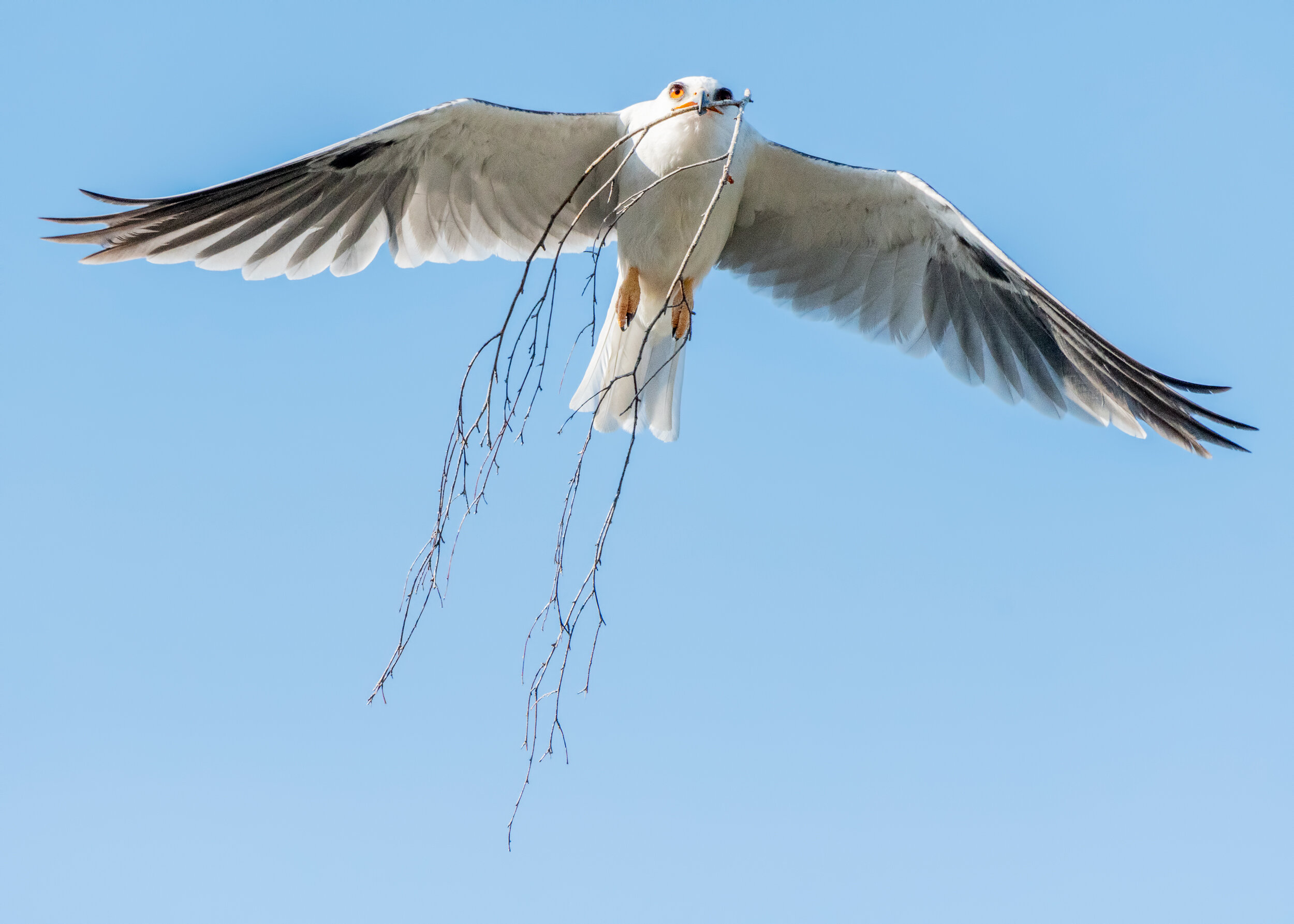Nature is so incredibly amazing! Most birds are extremely skilled at building nests without any help from people. But often our fascination with birds inspires us to want to make it easier for them. If you decide to offer birds nesting material in your yard, make sure you only offer safe materials. Synthetic or man-made materials are not recommended. Provide birds with natural materials that are safe for them to use and haven’t been treated with chemicals. Some bird species can start to nest early in the year; so you may want to have materials available in your yard by January or February. Remember to refresh your supply for later nesters throughout the spring.
Bushtit near nest, Image by Larry Hickey
Safe materials to offer nesting birds:
Twigs or small sticks
Leaves and other yard debris - Ask your parents to leave fallen leaves and twigs in an area of your yard because they make excellent nesting material for many birds. Providing nooks in your backyard where leaves and twigs collect will provide a variety of materials for the birds to choose from when they are building nests. Birds may even pick through your compost pile looking for suitable nest material. Allow spiders to make webs in your plants. Some birds use spider webs when they build their nests, such as hummingbirds.
Dried grass clippings - Only if the grass hasn’t had chemical fertilizers, pesticides, or other chemicals applied to it.
Mud - In Spring, routinely add water to an area of plain soil in your yard to make a mud bed. In the Sacramento area, Barn and Cliff Swallow, American Robin, and Black Phoebe use mud for building their nests.
Moss - Hummingbirds use moss for their nests along with spider webs!
Strips of fallen tree bark
Pine needles
Straw (available at feed stores)
Cattails
Materials NOT to offer birds:
Yarn or string - Both can get tangled around a bird's legs or feet. Also, many yarns are synthetic (made of plastic). It is recommended to use natural materials.
Human hair - Even though hair is natural, birds can become tangled in it!
Dryer lint - When it rains, holes form in a nest made with dryer lint. After it dries, dryer lint becomes crumbly and the nest falls apart. Dryer lint can also have chemicals in it that are harmful to birds.
Pet fur - Birds’ legs or feet can become tangled in pet fur. Pet fur may also be harmful to birds if the pet was treated with flea and tick medications or other chemicals.
Fabric scraps - Even fabrics made with natural fibers can get tangled around birds feet and much fabric contains synthetic materials.
Plastic of any kind, aluminum foil, and cellophane are not recommended
Anna’s Hummingbird in nest, Image by Larry Hickey
How to Provide Safe Nesting Material:
In piles on the ground (works well for leaves and twigs)
In clean wire-mesh suet cages, or in mesh bags hung on tree trunks, fence posts, or railings
Pushed into tree crevices or openings
Draped over plants
In open-topped berry baskets
Spiral wire hangers made especially for putting out nest material (one type looks like an oversized honey-dipper)
Hopefully you will soon see a wild bird collecting nesting material in your yard! Good luck!
Yellow-billed Magpie carrying nesting material, Image by Daniel Lee Brown
White-tailed Kite carrying nesting material, Image by Daniel Lee Brown
Information in this article came from the Cornell Lab of Ornithology’s allaboutbirds.org, www.ourherbgarden.com, and the National Audubon Society.




